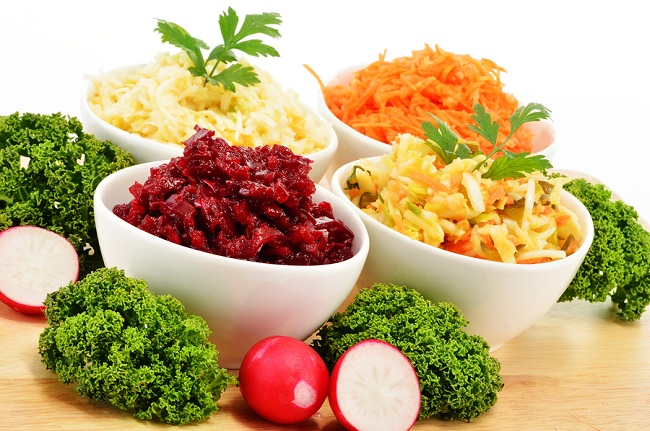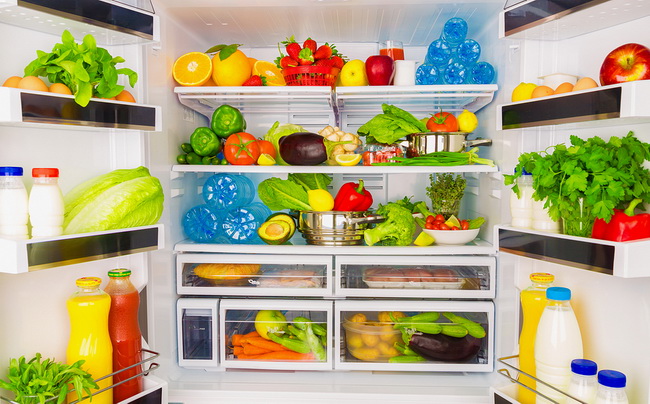- Make It Yourself Lavender Heart-Shaped Bath Bombs!
- 20 Things You Never Knew About “Down There”
- 12 Best Foods For Those Suffering From Arthritis Pain
- 12 Personal Hygiene Mistakes Almost Everyone Makes (Mom Never Told You About #4!)
- 15 Medicinal Plants And Herbs From The Cherokee People
- 12 Mind-Blowing Benefits Of Drinking Coconut Water During Pregnancy
- 12 Outstanding Winter Foods That Won’t Fatten You Up Like A Christmas Turkey
Want to Do More than Meatless Mondays? Go Vegan in 5 Easy Steps!

Photo credit: bigstock.com
Have you been practicing the Meatless Monday program and find that you like it so much you’ve been doing it again on Wednesdays or Fridays? Perhaps it’s time for you to think about taking the big step and just going vegetarian or vegan all the way.
Now, this article isn’t here to convince you to go vegan. If you are interested you can check out vegansociety.com, or read a book called The China Study by T. Colin Campbell, or watch Forks Over Knives. Those are good places to start to get some reliable information.
In this article we simply want to address how you can accomplish the transition from eating meat to being vegetarian, or going all out vegan, as easily as possible. This is a big change in your life and it can be much more difficult than you think. Many people fail to become vegetarians because they think that it’s as simple as cutting meat out of your diet. However, that is the same kind of thinking that keeps many people from quitting smoking. Habits that you have acquired and practiced for years (and you have most likely been eating meat since you were a baby) are rarely easy to simply drop like a set of keys. For most people, it takes a bit of planning and strategy.
So if you would like to make every day Meatless Monday, keep reading about how you can do so successfully in 5 easy steps.
1. Be Aware
Because we live such busy lives, we often do many things on a sort of autopilot. We don’t really pay attention to how the food we eat makes us feel, or, many times, what we are even eating. Can you remember what you had for breakfast yesterday? Probably not. So, to begin with, start by keeping a food journal for about 2 weeks. It doesn’t have to be complicated, just write down what you ate for eat meal and then how you felt in general during the day, your energy levels, and how many hours of sleep you got, or if you couldn’t sleep, why you thought you couldn’t.
These things will really give you an idea about how food affects our everyday lives. For example, you might start realizing that every time you eat at a fast food joint you get a terrible headache or you simply have no energy a few hours afterwards, or maybe you will find that whenever you eat dairy, you have episodes of insomnia. Once you are aware of how food is affecting you, you will be prepared to make changes so that you can make better choices and feel better.
Continue to Page 2

Photo credit: bigstock.com
2. Make Gradual Changes
If you try to do too many things at one time you might find that you can do none of them or you become frustrated. Don’t try to go cold turkey; it only sets you up for failure. Don’t pressure yourself, either, going vegan takes time for most people, so if you forget and share a big plate of nachos with friends after work and realize that you forgot that those nachos have beef, don’t beat yourself up about it. Tell yourself that you will try to do better next time and forget about it.
You don’t have to start by removing all meat (or meat products such as eggs) right away. Start with small changes. You might want to start by making only 1 meal a day that contains meat. Or start having meatless weekends in addition to meatless Mondays. (This would mean you are going vegan 3 days a week, an excellent start!) Take things slowly and you will be more successful.
SEE ALSO: 15 Foods For Vegetarians Infographic
3. Plan Your Menu
As the old saying goes, if you fail to plan, then plan on failing. Now of course the perfect diet would consist of you making many foods from scratch (such as bread or pasta) but as we mentioned earlier, right now the idea is to transition as easily as possible. So for beginners, let’s just focus on eating healthy and slowly eliminating meat. So your grocery list should look like this:
- Fresh organic vegetables and fruit
- Beans and legumes
- Frozen goods (vegetables, stir-fry, fruit)
- Canned goods
- Baking goods
- Condiments and spices (seasonings)
- Meat (limited quantities of free range, organic meat only)
Be sure that you are choosing baked goods that are whole grain. Try experimenting with one or two new foods per week such as perhaps split green peas, lentils, garbanzo beans, jasmine rice, or black beans. Rather than cans, try to find foods in glass bottles or at least buy those that have no added sugar or corn syrup. Many people find that when they get the munchies, eating some whole grain crackers or non-GMO corn chips and salsa really help to satisfy those urges so be sure you pick up some of those items as well.
You might want to think about keeping this grocery list and not making any more cuts for two or three months. Give your body (and mind) time to adjust. When you think you are ready, move on to steps 4 and 5.
Continue to Page 3

Photo credit: bigstock.com
4. Removing Eggs and Dairy
If you want to go all out vegan and stop eating eggs and dairy products, you might want to make this step #5 instead, as many people find that life without these products can be difficult, especially eggs. Most people eat eggs at least a few times a week for breakfast, and use them for baking. Also, this means no cow milk for cereal or yogurt as a snack, and many, many recipes use cheese or yogurt. This isn’t an impossible task, however.
Instead of eggs, many people find that substituting applesauce, mashed up bananas (especially plantain bananas), tofu, or a commercial egg substitute works just fine. You can start making your own nut milk (such as almond or hemp) and use that anywhere you would use regular cow milk. As for breakfast, not eating eggs means you are free to try a dozen other creative breakfasts such as toast and fresh fruit, tofu scramble, oatmeal with nuts and honey, or granola with rice milk. The choices are virtually endless!
5. Calling it Quits with Cows (and chickens and pigs, etc.)
This one is much easier once you have managed the steps above- much more so than you think. Again, don’t wake up one day and think “Today is the day I stop eating meat.” As we said earlier, you can start by cutting back several days a week, or by cutting back one meal at a time. Some people begin by cutting their amount of meat at each meal. For example, rather than use a pound of ground beef for your spaghetti, cut it back to a half pound, then a few meals later, cut it back to a quarter pound of meat.
Once you are OK with eating meat only occasionally, start taking one meal per week and looking up recipes so that you can make the same meal without using meat, or by substituting something else, such as making vegetable lasagna. Again, take those baby steps. Once you find a recipe you like, take another meal and do the same thing. Before you know it, one day you will find that you are only eating meat about once a week, or less. When you take that final step, it won’t seem like such as big, hairy deal at all.
Now, reward yourself with something nice, like maybe a big fruit smoothie, a new vegetarian cookbook, a spa day, or maybe a weekend camping trip with the kids. Everyone needs a little reward for a job well done, right?
If you are pregnant, are trying to become pregnant, or have any kind of health condition, especially if you are taking prescription medications, always consult with your doctor before making any drastic changes to your diet. Although a vegan or vegetarian diet is very healthy, there can be reactions, so for your health’s sake, always consult your doctor first.
References:































